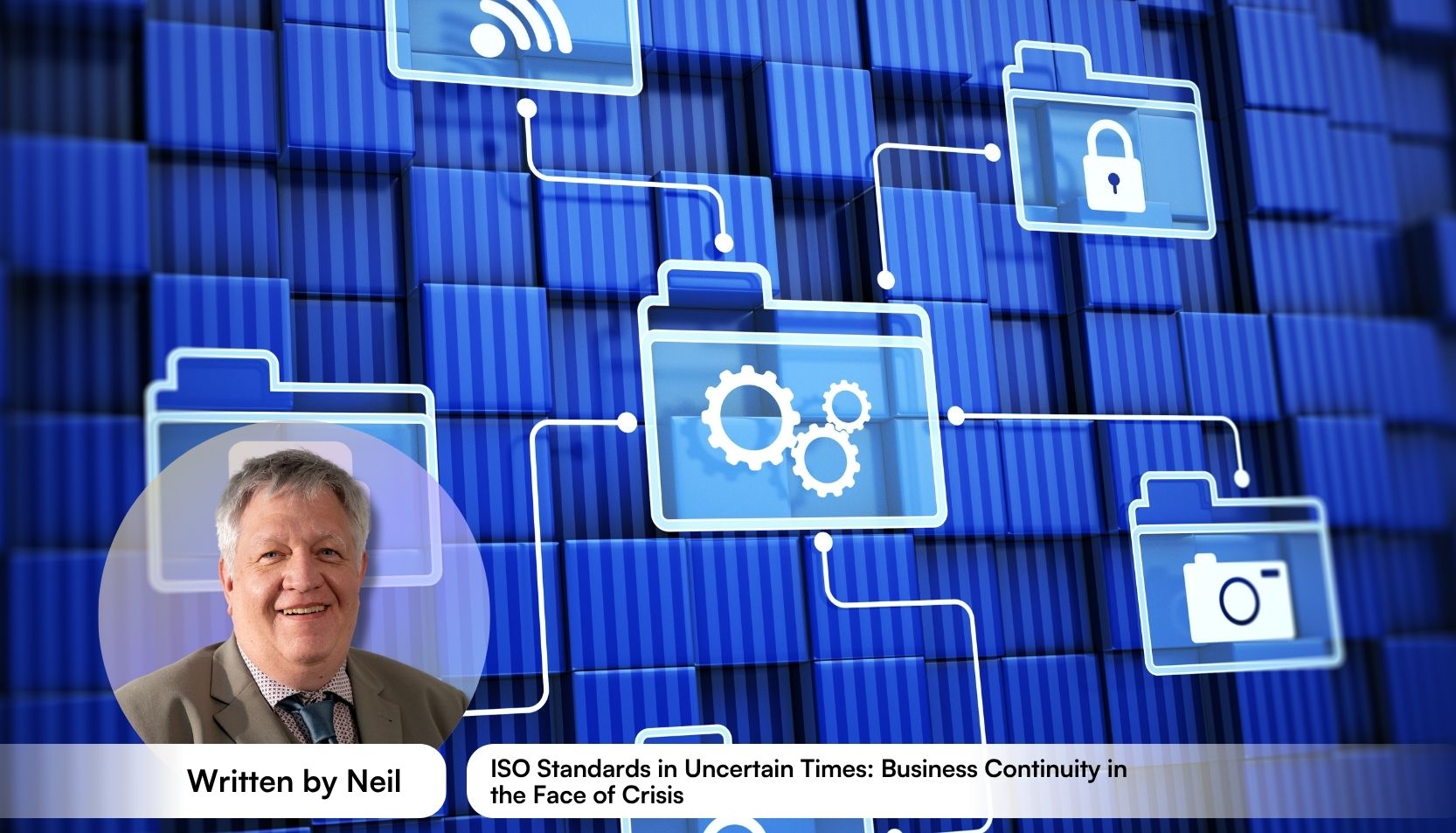

By Neil, SYTECH Quality Manager
In today’s volatile landscape, businesses face constant uncertainty; from natural disasters and cyberattacks to power outages, global pandemics, and economic instability. These disruptive incidents can bring even the most well-established organisations to a halt, interrupting mission critical operations and damaging reputation, finances, and customer trust. That’s why building a strong business continuity strategy is no longer optional, it’s essential.
The good news is that help exists in the form of international standards. Specifically, ISO 22301, the globally recognised standard for business continuity management systems, offers a framework that enables organisations to prepare for, respond to, and recover from unexpected events while keeping critical business functions running.
Whether it’s a natural disaster damaging your offices, a power outage affecting your data centres, or a cyber breach exposing customer records, business disruption is not a matter of if, but when. These incidents can cripple business processes, delay the delivery of products and services, and cause lasting harm to brand reputation.
The key to resilience lies in preparation. Organisations with a solid business continuity strategy and disaster recovery plan in place can adapt quickly, minimise downtime, and maintain service levels even during a crisis.
Developed by the International Organization for Standardization, ISO 22301 is the world’s first and most widely adopted standard for business continuity management systems (BCMS). It provides a systematic approach to ensure that critical business operations continue even during serious disruptions.
The standard outlines how organisations can:
Adopting ISO 22301 allows businesses to move from a reactive to a proactive approach. Instead of scrambling for solutions when things go wrong, companies are equipped with ready-to-activate continuity and disaster recovery plans.
Committing to ISO 22301 isn’t just about ticking a compliance box—it offers real, tangible benefits:
By identifying key operations and developing plans to protect them, you can keep your organisation functioning when it matters most. This is especially important for mission critical services, such as payment systems, supply chains, or healthcare delivery.
A swift, organised response to disruption sends a clear message: your business is resilient, trustworthy, and reliable. This is particularly vital in industries where continuity and trust are non-negotiable.
The process of mapping your business functions and implementing a BCMS often reveals inefficiencies. Improving these systems not only boosts your crisis response but enhances day-to-day performance.
For some sectors, business continuity planning is a regulatory requirement. Even where it’s not, demonstrating alignment with international standards like ISO 22301 can give you a competitive edge, especially when bidding for contracts or working with risk-conscious partners.
One of the strengths of ISO standards is their compatibility. For example, businesses that already follow ISO 9001 for quality management or ISO 27001 for information security will find it easier to align their continuity planning with existing management systems.
This integration reduces duplication, streamlines audits, and ensures that your organisation speaks a common language across all risk and performance disciplines.
Consider a scenario where a data centre suffers a sudden power outage. For a business reliant on real-time systems (such as a logistics provider or e-commerce platform) this kind of event could be catastrophic.
With ISO 22301 in place, the organisation would already have:
As a result, systems would switch to backup power or remote servers, staff would know exactly what to do, and clients would remain informed. Disruption is minimised, trust is maintained, and financial losses are significantly reduced.
Implementing ISO 22301 involves several steps:
While the process takes time and commitment, the long-term rewards in resilience, performance, and peace of mind are well worth it.
Uncertainty is the new normal. From cyber threats and extreme weather to global pandemics, the risks facing today’s businesses are complex and often unpredictable. But with ISO 22301, organisations gain the tools to plan, respond, and recover in a structured, effective way.
By adopting internationally recognised management systems, building detailed disaster recovery plans, and protecting mission critical operations, you’re not just preparing for disruption, you’re building a business that can thrive in the face of it.
In uncertain times, business continuity isn’t a luxury. It’s a strategic necessity.